
Omsk. Alexander Solomonovich Kabalkina house, Duma Street 3. Main facade. Photo: September 18, 1999
William BrumfieldAt the beginning of the 20th century, Russian chemist and photographer Sergey Prokudin-Gorsky developed a complex process for vivid color photography. His vision of photography as a form of education and enlightenment was demonstrated with special clarity through his images of architectural monuments in the historic sites throughout the Russian heartland.
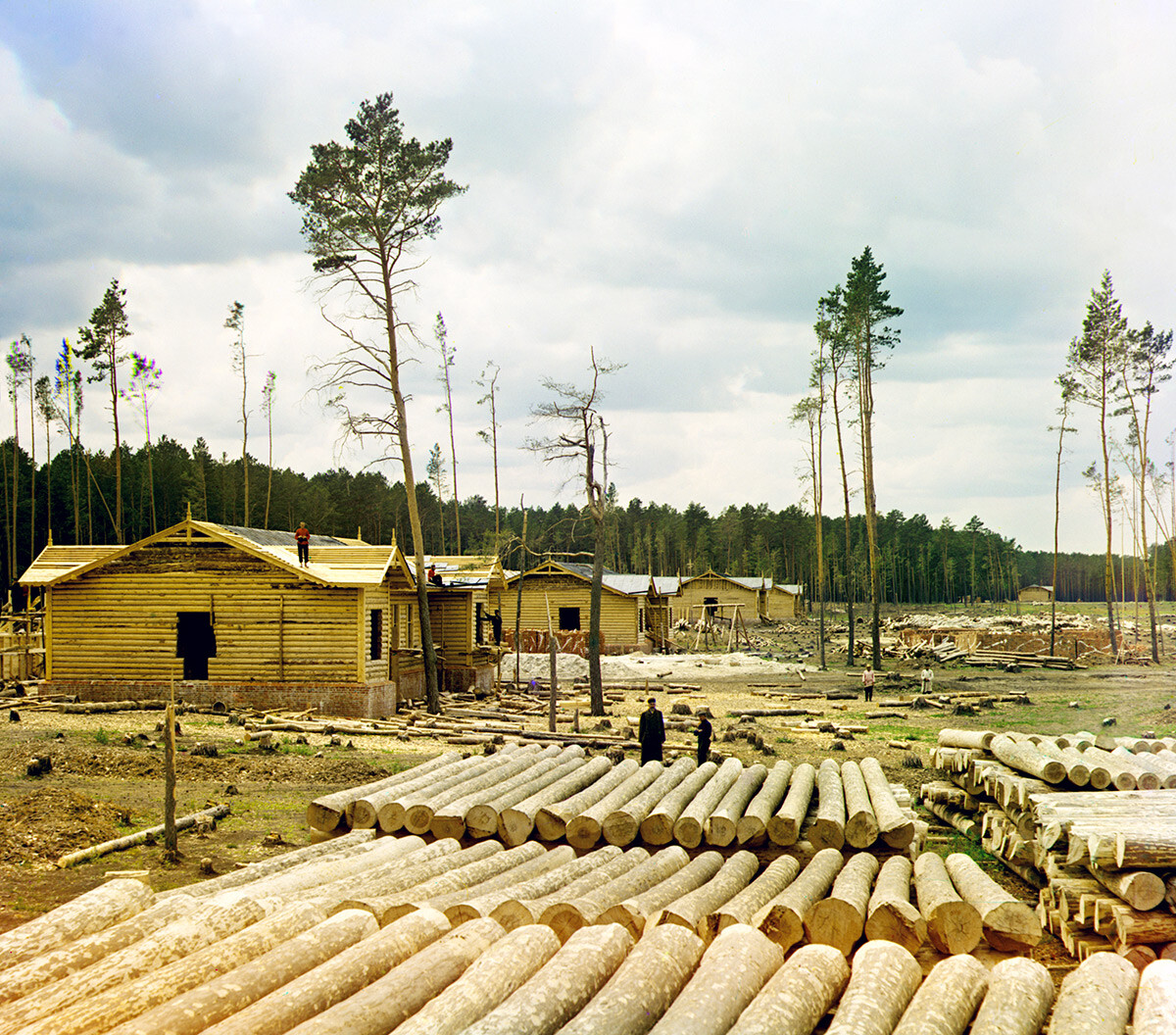
Shchadrinsk. Construction of standardized log buildings for a railroad station complex. Photo: Summer 1912
Sergey Prokudin-GorskyIn June 1912, Prokudin-Gorsky ventured into western Siberia as part of a commission to document the Kama-Tobolsk Waterway, a link between the European and Asian sides of the Ural Mountains. The town of Tyumen served as his launching point for productive journeys that included Shadrinsk (current population 68,000), established in 1662 on the Iset River.
The area around Shadrinsk had been settled in the mid-17th century by peasants given allotments of state lands, which they would cultivate and return a grain levy to the state. Authorities in Moscow wanted to attract settlers to these newly acquired vast open territories, whose rich soil was ideal for agriculture.
By the time of Prokudin-Gorsky’s visit, the town had several enterprises, including a ceramics factory and a population of some 15,000. His photographs of Shadrinsk include the rapid construction of pine log buildings for a railroad station complex – part of a secondary rail line built in 1911-1913. The partially completed buildings show an efficient use of standardized design, with measured log stacks in the foreground. Tall, spindly pine trees complete the picture.

Omsk. Western Siberian Division of the Imperial Russian Geographic Society, Museum Street 3. Photo: September 15, 1999
William BrumfieldIn a broader context, these photographs reflect the expansion of Russia’s rail system within a triangle bounded by Ekaterinburg (on the Asian side of central Ural Mountains), Chelyabinsk (in the southern Urals) and Omsk (in western Siberia). Rail construction greatly increased the importance of Omsk as a transportation center on the Trans-Siberian Railway. Although Prokudin-Gorsky did not reach Omsk, I visited there in the late summer of 1999.

Alexander Solomonovich Kabalkina house, Duma Street 3. Corner view. Photo: September 18, 1999
William BrumfieldOmsk (current population around 1,110,000) was founded in 1716 as a fort on the middle reaches of the Irtysh River. During the 18th century its primary purpose was to protect Russia’s southern border and establish authority over the aboriginal steppe peoples.

I. F. Mashinsky house, Pushkin Street 26. Note brick firewall on right side. Photo: September 18, 1999
William BrumfieldAlthough administratively subordinate to Tobolsk throughout the 18th century, Omsk gained increasing power in the 19th century. From 1808 until 1917, Omsk served as the headquarters of all Siberian Cossack troops and, in 1822, a separate Omsk Province was formed.
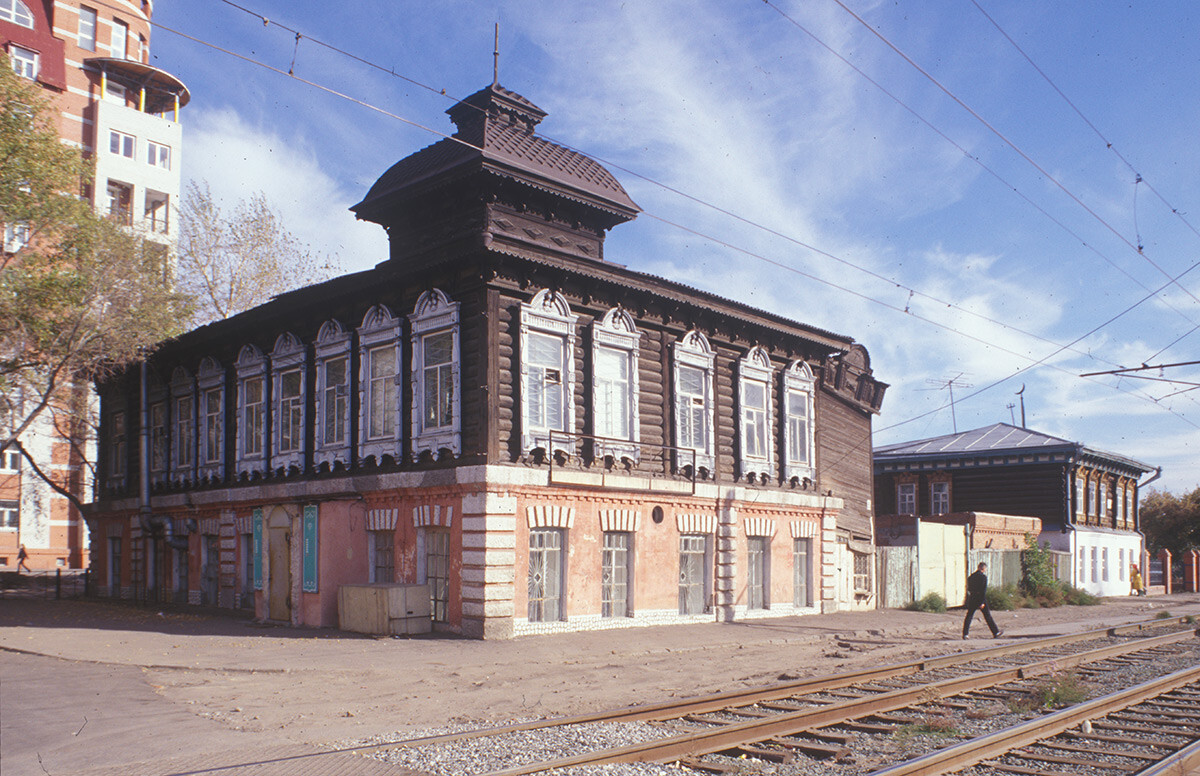
N. Abdulmanov house, Marshal Zhukov Street 95. Wooden structure on brick ground floor. Right: D. V. Proskuriakov house (now mosque). Photo: September 18, 1999
William BrumfieldDuring the latter part of the 19th century, Omsk began a period of heady expansion, as the town became a transportation center for Russia’s vast interior. Regular steamboat service along the Irtysh River to Tobolsk began in 1862.
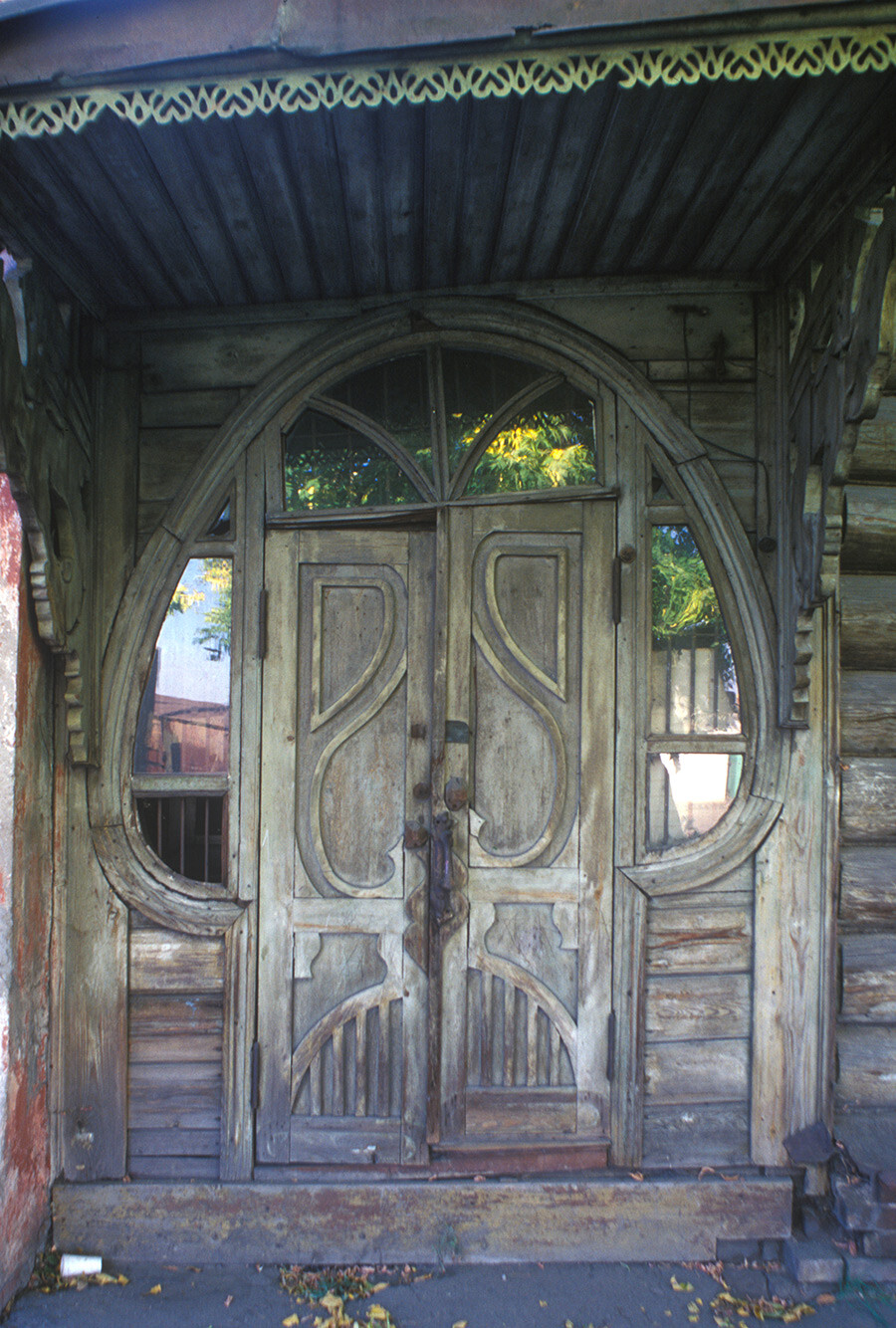
Wooden house, Michurin Street 48. Entrance porch in "Modern Style" (Art Nouveau). Photo: September 18, 1999
William BrumfieldBut, it was the railroads that made Omsk a boomtown. In 1894-95 Omsk was linked by the Trans-Siberian Railroad to Chelyabinsk in the west and Novonikolaevsk (now Novosibirsk) in the east. In 1913, another rail line was completed from Omsk to Tyumen in what would become the new Siberian mainline. By the beginning of the 20th century, the population of Omsk had tripled, to over 60,000 inhabitants.

Wooden house, Michurin Street 48. Windows with "Modern Style" shutters and capped with Nordic style dragon figures. Photo: September 18, 1999
William BrumfieldThis development as a transportation nexus led to a surge in the city’s commercial district. What had formerly been a provincial garrison town consisting primarily of wooden structures punctuated with large churches, now became a preeminent site for banks, educational institutions, industry and retail trade in Siberia.
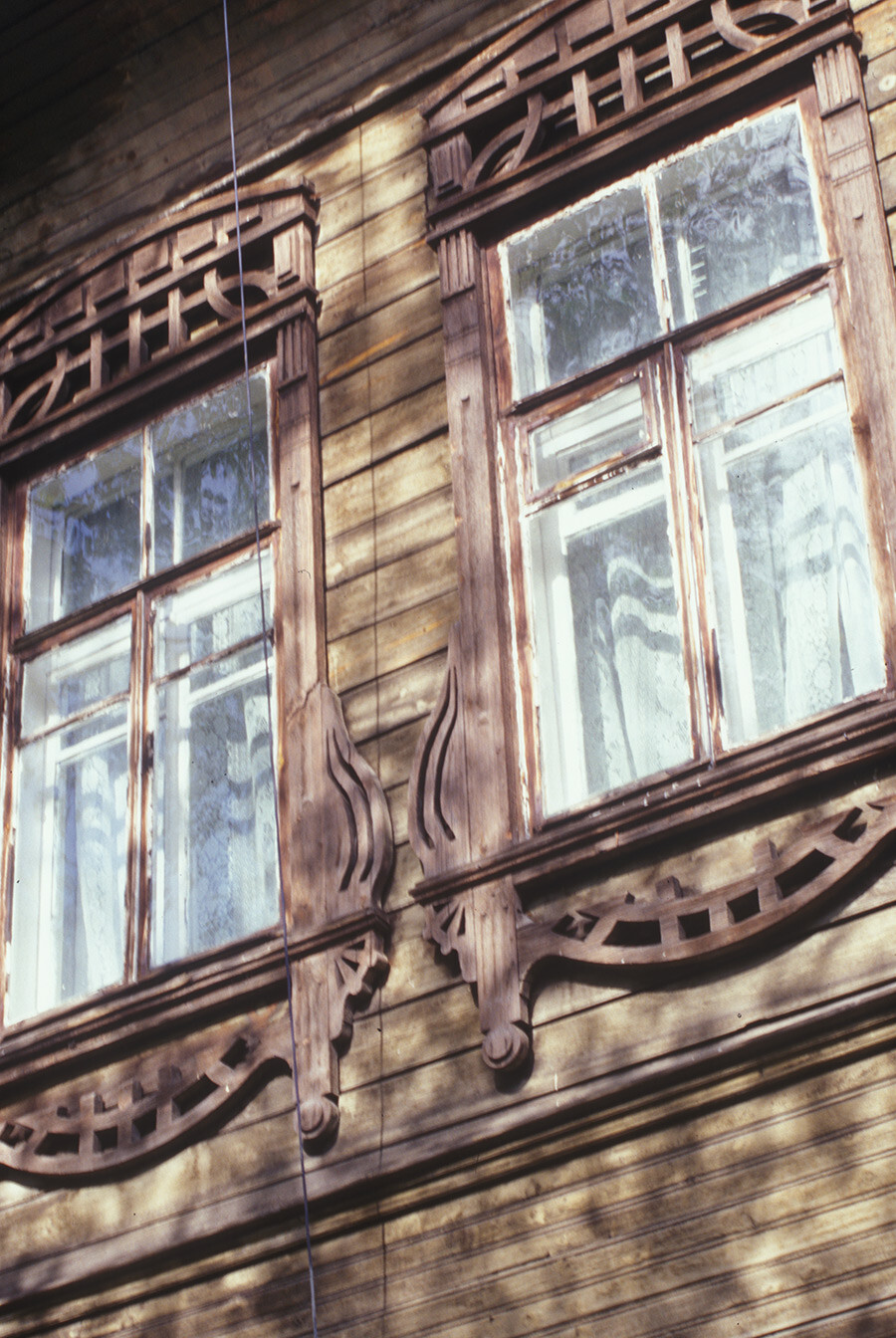
Yankelevich house, Post Office Street 37 & Uchebnaya Street 16. Note "Modern Style" shutters. Photo: September 18, 1999
William BrumfieldEven during this rapid development, however, wooden buildings remained a major part of the urban fabric. Some of the log structures were of considerable size and designed by accomplished architects, such as the building for the Western Siberian Division of the Imperial Russian Geographical Society, constructed in 1896-1899 by architect Iliodor Khvorinov.
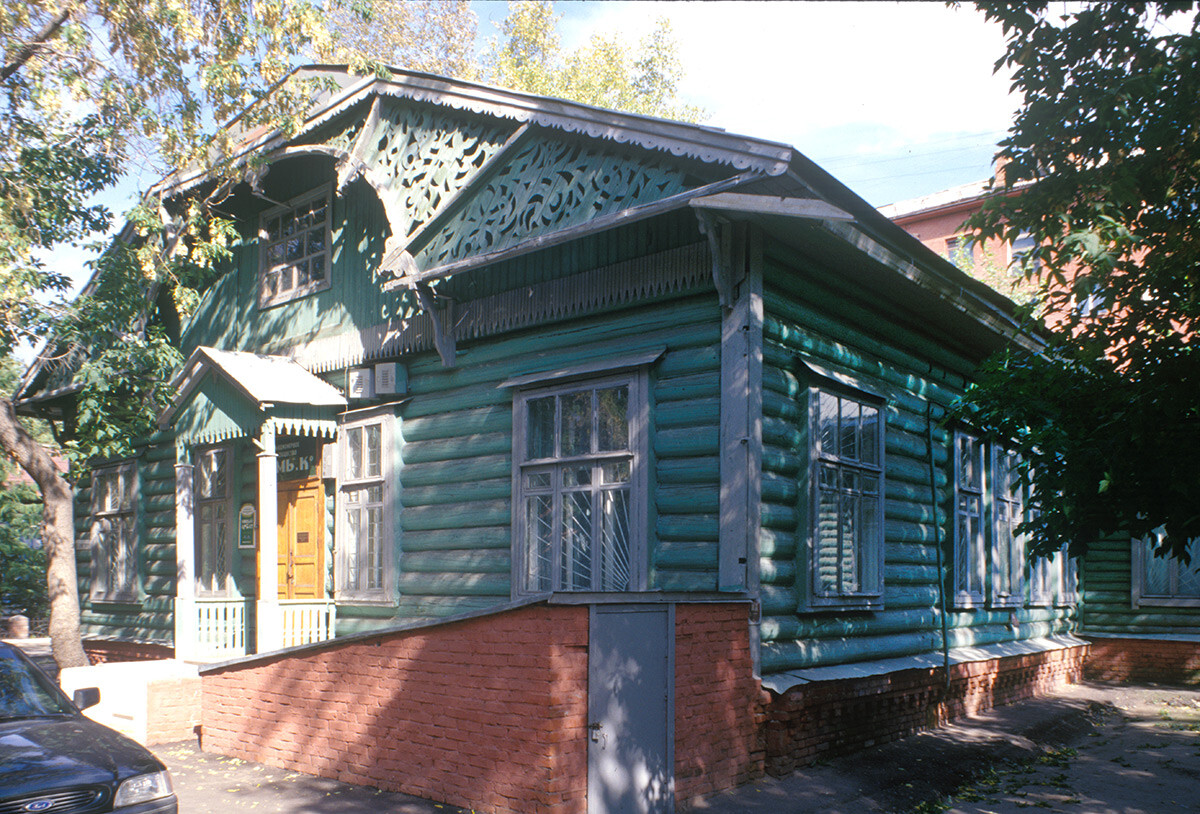
Log house near Tara Street. Note decorative fretwork on cornice. Foreground: entrance to storage cellar. Photo: September 15, 1999
William BrumfieldBranches of the Geographic Society served as important intellectual centers in the provinces, yet Omsk was unusual in its log building, which demonstrated a deep connection to Russian tradition. Less costly to construct, the wooden Geographic Society building also proved eminently functional, serving in much its original purpose when I photographed it a century after its completion. The hewn log walls fastened at the end with a trapezoidal interlocking joint. Periodically, the exterior has been covered in plank siding (as at present), but I was fortunate to see the log construction in its original state.
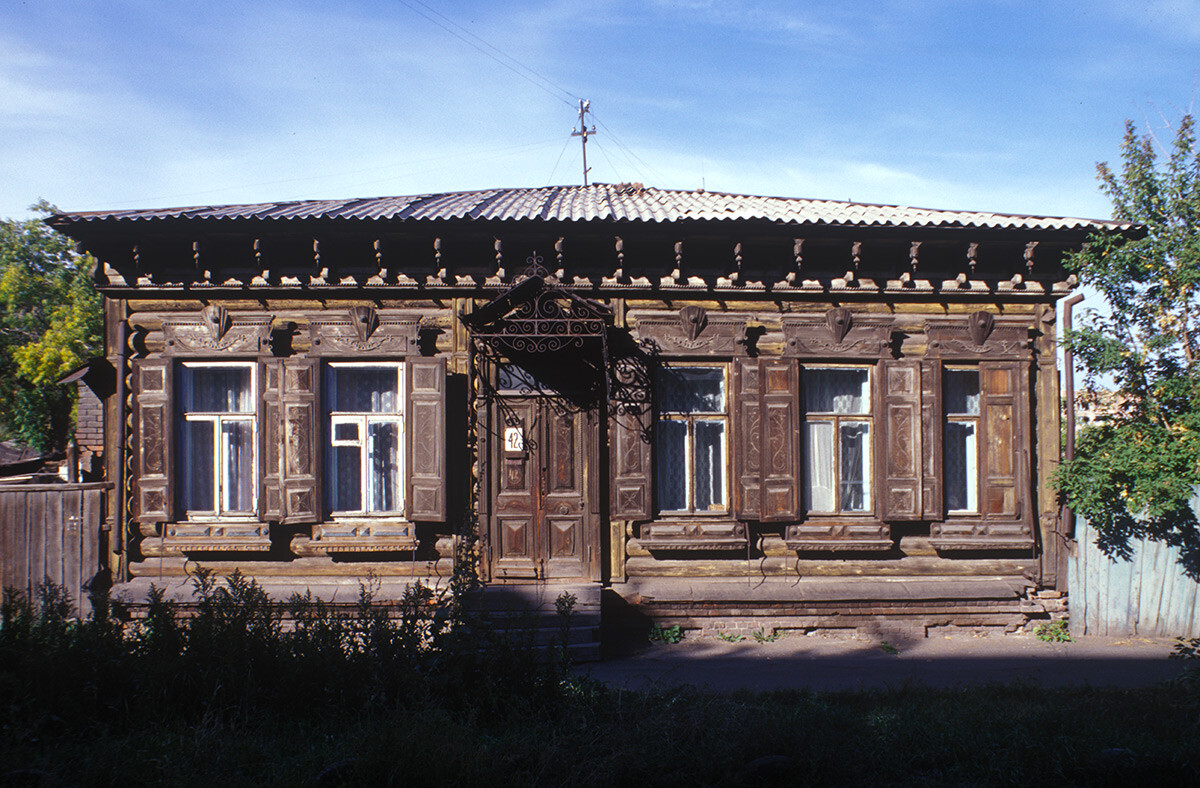
Log house, Thirty Years of Komsomol Street 42. Neoclassical detailing. Tin roof added late Soviet period. Photo: September 18, 1999
William BrumfieldIn Omsk, as elsewhere in the Russian provinces, the main role for wooden architecture at the turn of the 20th century was to provide housing. Sometimes the log walls were clad with plank siding and in other cases they were left exposed. To lessen the danger from fire – that curse of Russian towns – many of the buildings had a wall of brick on the right side – the brandmauer, or “fire wall”.
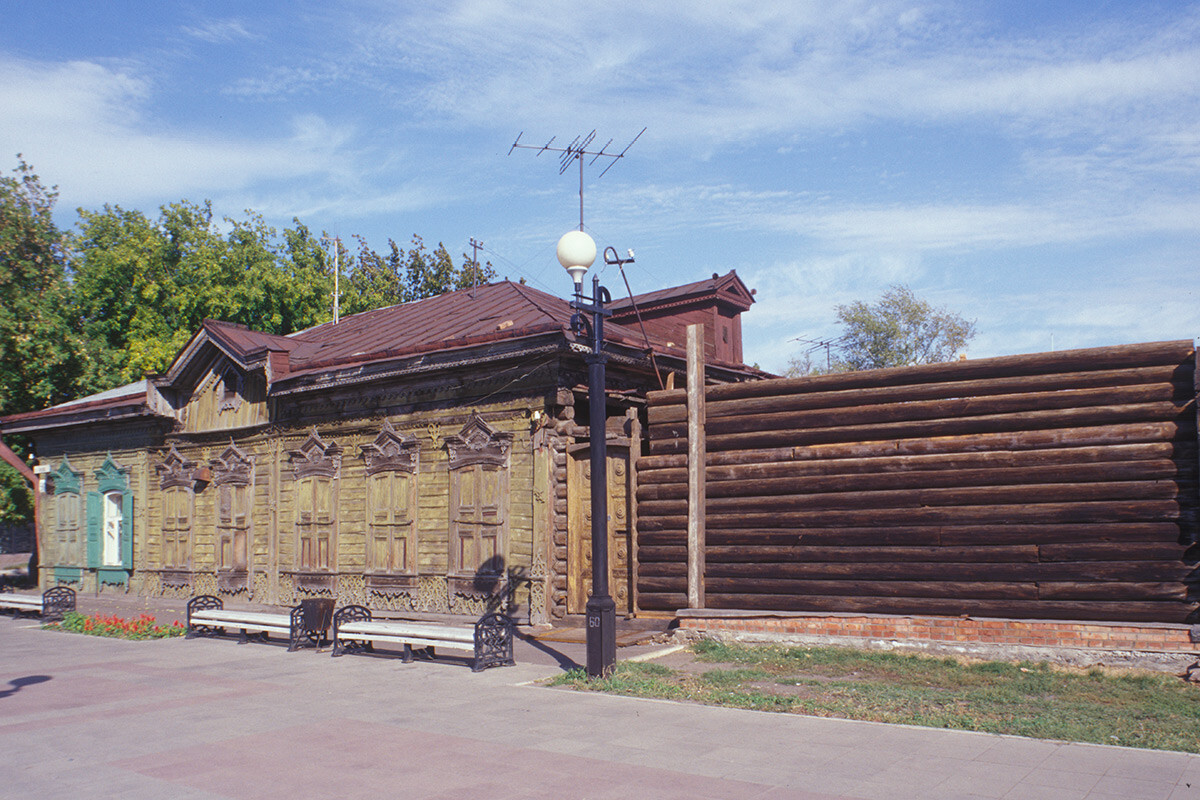
Wooden house, Tara Street 50. Right: log wall of storage shed. Photo: September 15, 1999
William BrumfieldWooden dwellings could range from the relatively simple to large multi-family dwellings. One of the most imposing is the mansion, built in 1911 on what was then known as Duma (City Council) Street for A. S. Kabalkin, a prominent member of the legal profession.
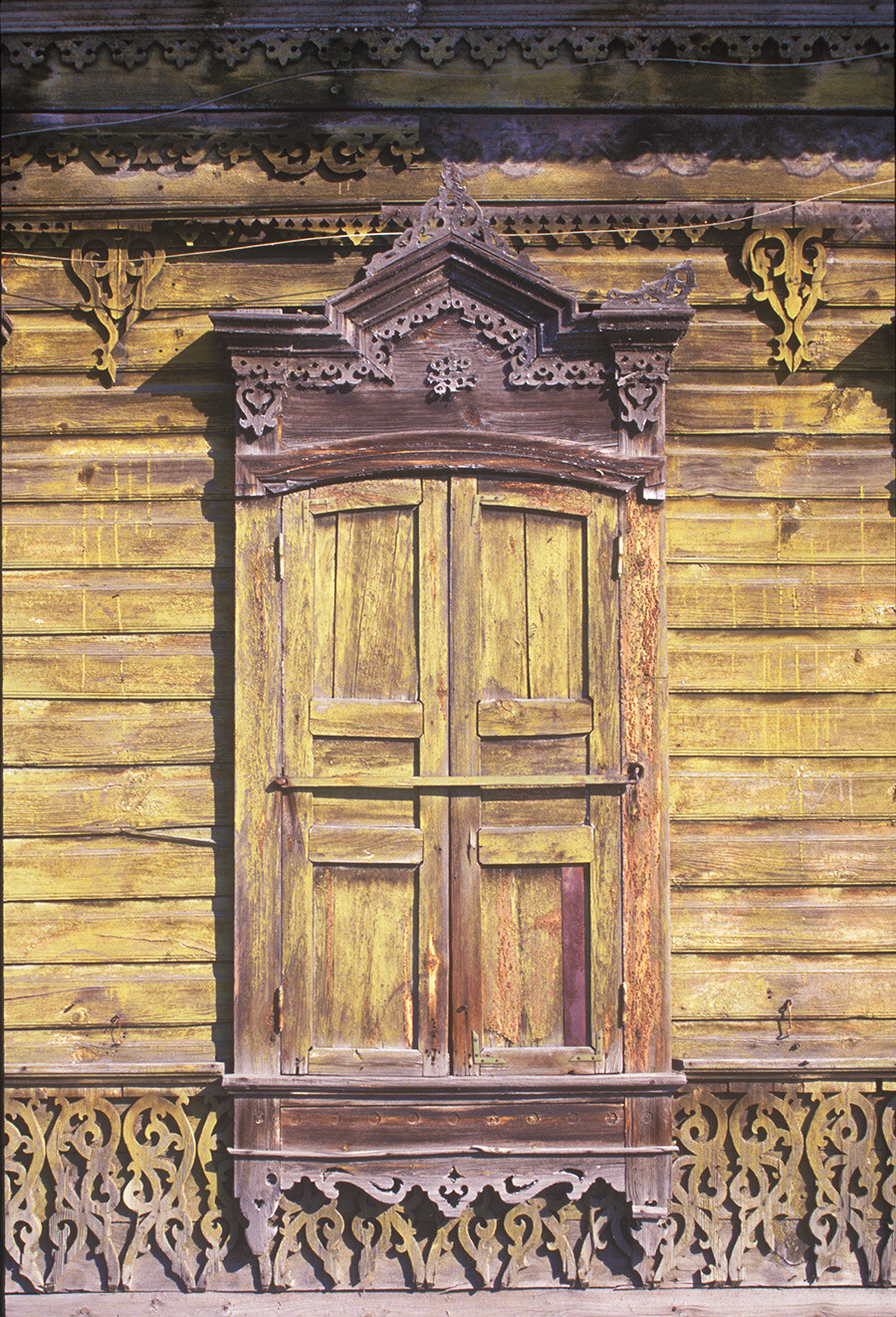
Wooden house, Tara Street 50. Shuttered window, decorative fretwork on facade. Photo: September 15, 1999
William BrumfieldThe Kabalkin mansion displays an assured sense of design in which the unclad dark log walls contrast with the light color of simple window surrounds for an aesthetic effect. The left corner is punctuated with a bay turret that dominates the area. When I photographed, the lots around had been cleared, which gave an unobstructed view of the organic plasticity of the structure. This approach to design was intended to create a unified work of art from all perspectives, a characteristic of the so-called Modern Style (the Russian equivalent of Art Nouveau) that flourished at the turn of the 20th century.

Log house, Tara Street 20. Photo: September 15, 1999
William BrumfieldOther log mansions of similar scale include the I.F. Mashinsky house (Pushkin Street 26) and the N. Abdulmanov house (Marshal Zhukov Street 95), both of which are crowned with Beaux Arts style domes. The latter house, built by a local Moslem merchant, shows the common technique of elevating the main floor of a log house over a brick ground story.
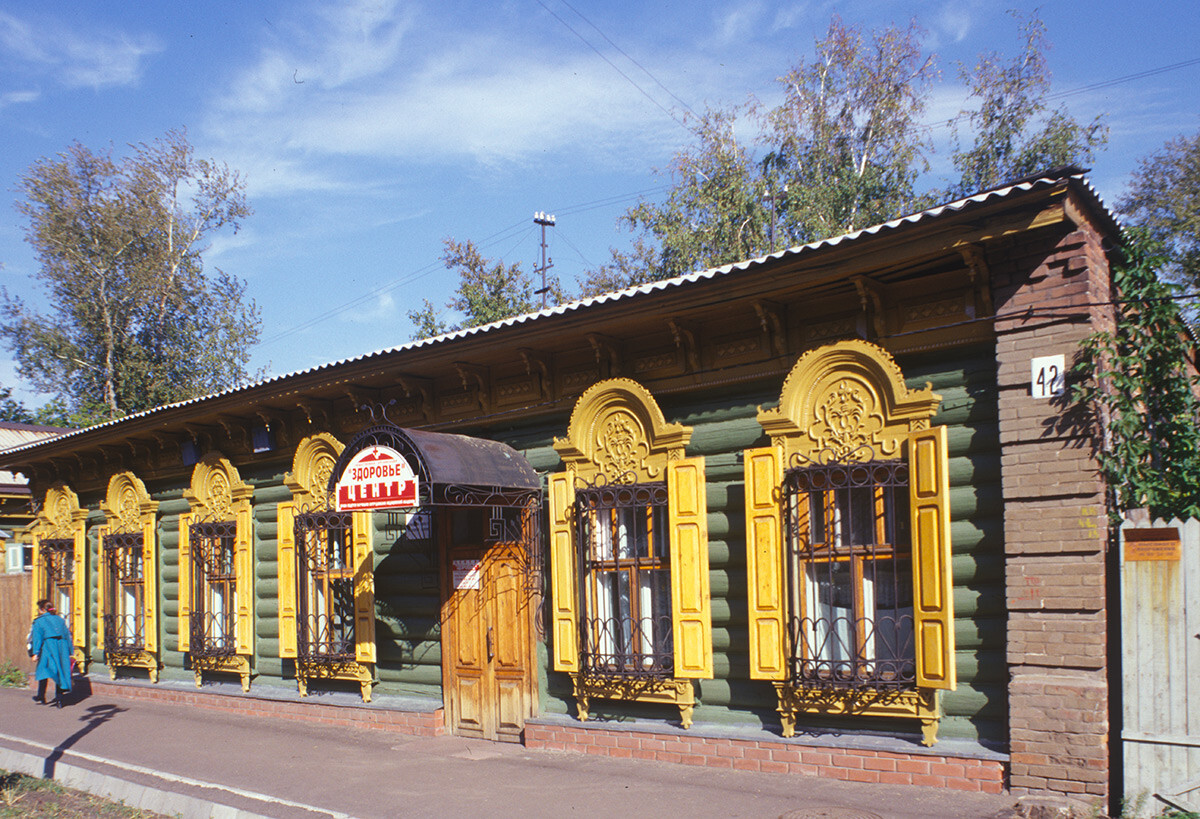
Log house, Tara Street 42. Note ornamental window pediments & brick firewall (right). Photo: September 15, 1999
William BrumfieldThe Modern Style also appears in the exuberant decorative detailing of smaller houses with sweeping curvilinear flourishes throughout the main façade. An excellent example is the house at 48 Michurin Street with its Art Nouveau doorway. and window surrounds crowned with dragon motifs in an imitation Nordic style (Norwegian stave churches). Unfortunately, the house and lot have been poorly maintained.
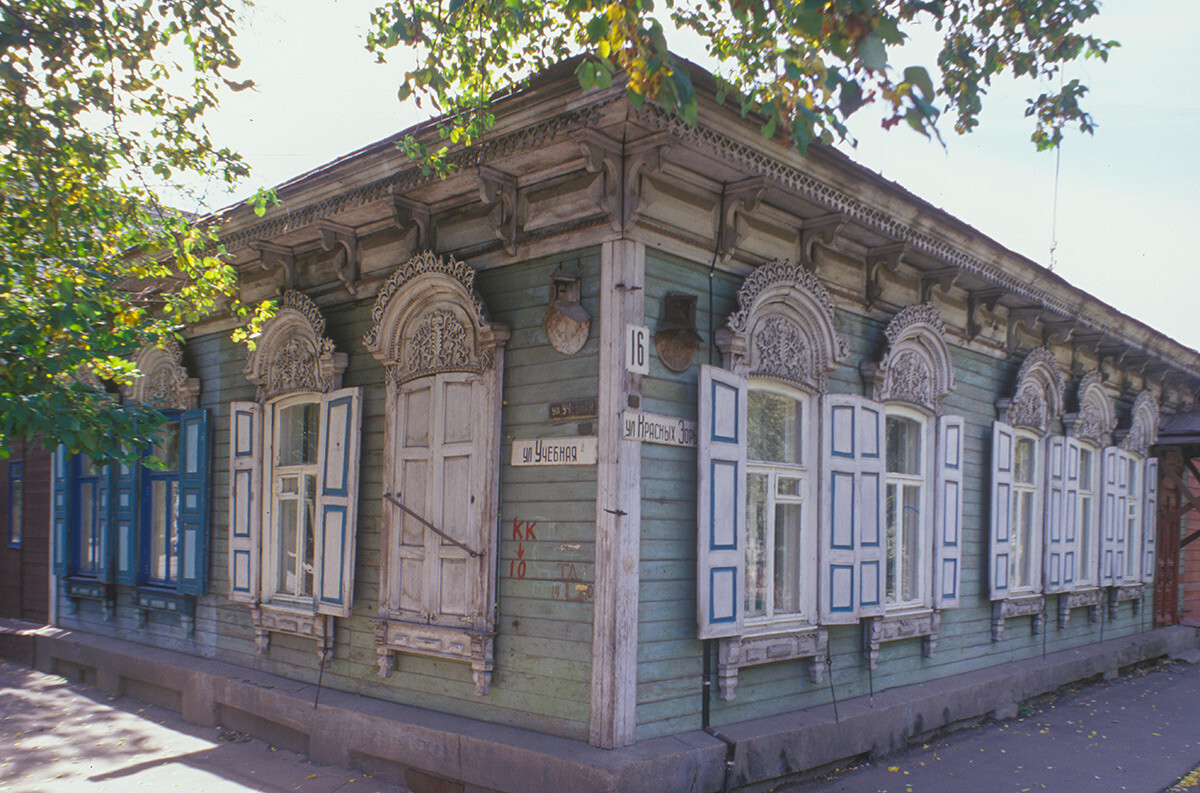
V. I. Viatkin house, Red Dawns Street 16 & Uchebnaya Street. Note ornamental window pediments. Photo: September 18, 1999
William BrumfieldThe delightful decorative flourishes of some wooden houses show an eclectic mixture of Modern with elaborate fretwork details. Window surrounds are often crowned with elaborate flourishes that include a lacework of fretwork or carved wood.
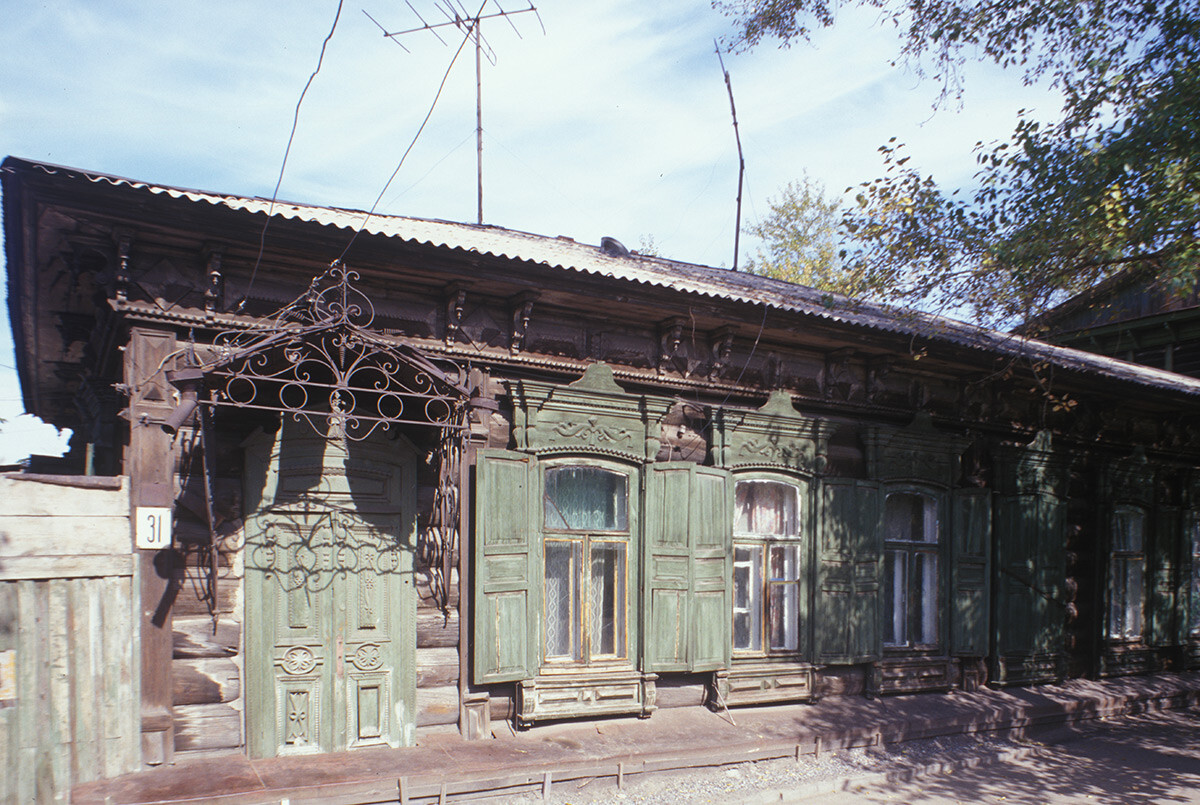
Proskuriakova house, Red Dawns Street 31. Note wrought iron porch & ornamental window pediments. Photo: September 18, 1999
William BrumfieldOther examples, such as the V.I. Viatkin house (Red Dawns Street 16) have a rich yet precise application of neoclassical details. And regardless of the façade style, I found delicately detailed wrought iron porches, exemplified at the Proskuriakova house (Red Dawns Street 31).
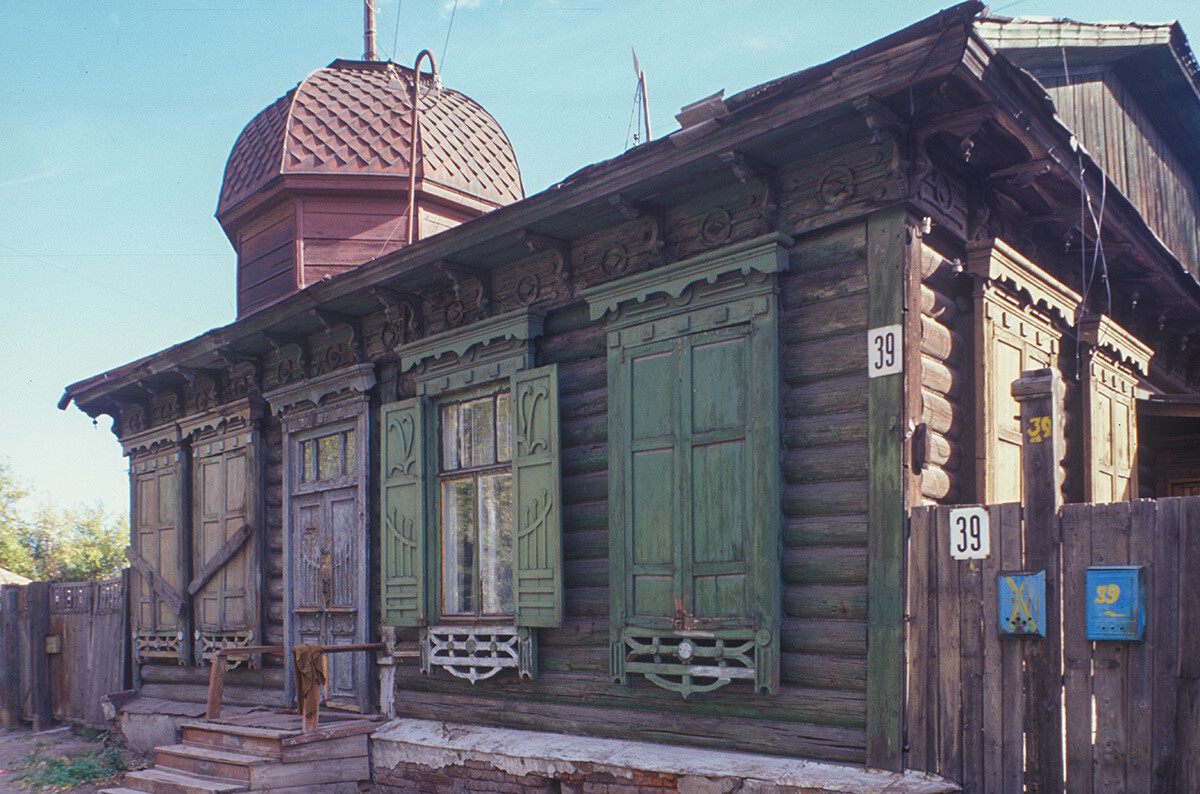
Log house with dome, Post Office Street 39. Photo: September 18, 1999
William BrumfieldOne of the most playful decorative expressions is the Philip Shtumfp house (Valikhanov Street 10), built at the turn of the 20th century for a prominent agronomist, entrepreneur and civic activist. Its turrets, complicated roof line, and ornamental window surrounds hark back to a traditional “folk” style launched by the artist Ivan Ropet in the 1870s.
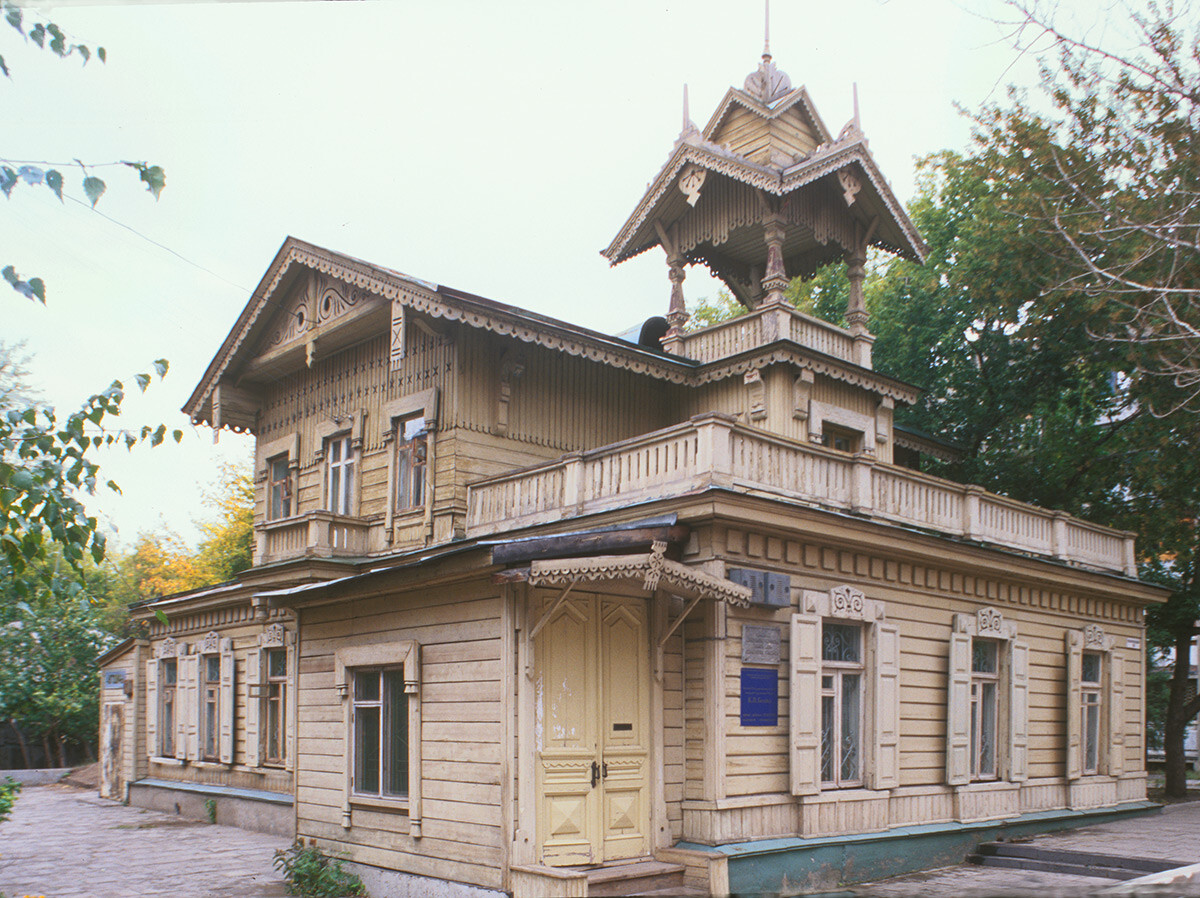
Philip Shtumfp house (Valikhanov Street 10), built at turn of 20th century for a prominent agronomist, entrepreneur, and civic activist. Photo: September 19, 1999
William BrumfieldOmsk also had examples of refined “constructivist” log apartment buildings built throughout Russia as a relatively inexpensive means to address housing needs in the early Soviet period. The apartment building at Tara Street 32 (now demolished) showed a restrained but elegant design with window shafts for stairwells above the entrances.
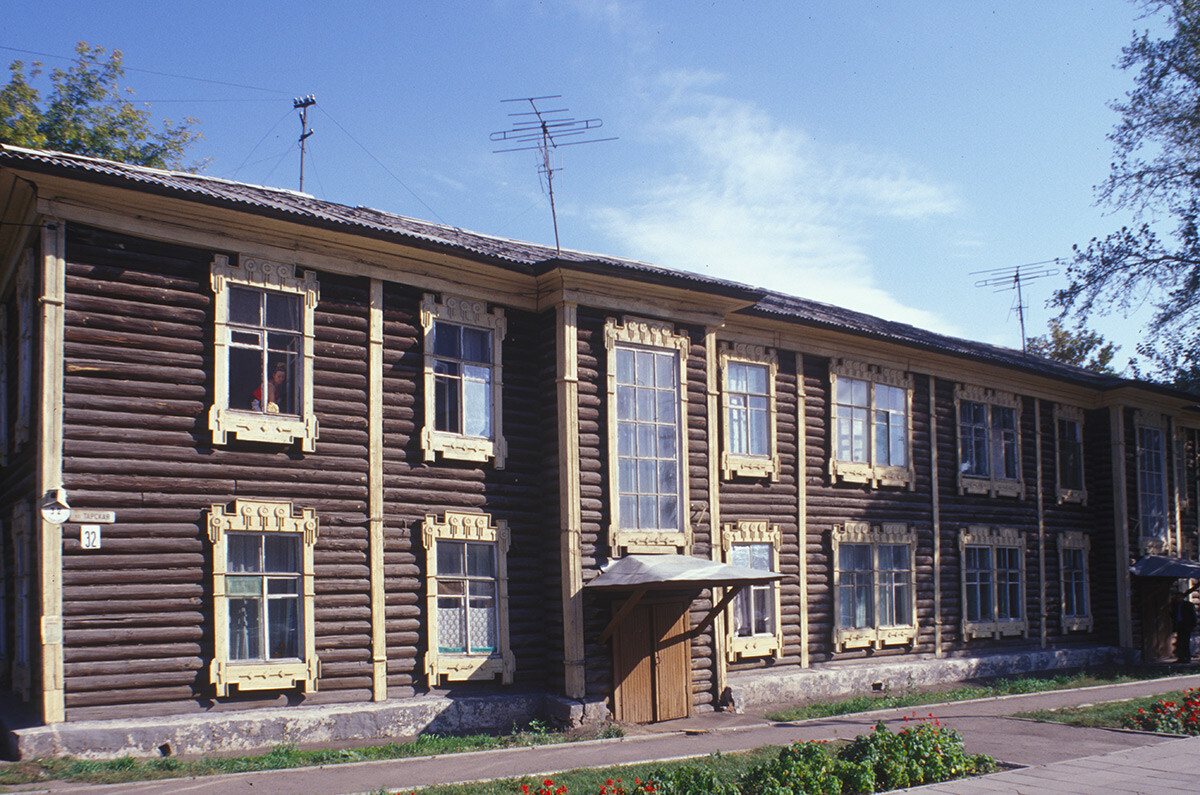
Log apartment building, Tara Street 32. Built in early Soviet period; now demolished. Photo: September 15, 1999
William BrumfieldIn addition to family dwellings, I also photographed a large 19th-century wooden building that served as a barracks and military hospital. The survival of this building, visible from the street on an active military base, was wholly unexpected.
In conclusion, one of the best examples of wooden architecture in Omsk is the so-called Soldiers Synagogue (Marshal Zhukov Street 53), built in 1855 for a community of “cantonists”, soldiers taken at an early age from Jewish communities during the reign of Nicholas I to serve in the army throughout the empire. At the end of a long period of schooling and service, they were allowed to remain in their place of service without restrictions that existed in the Pale of Settlement.
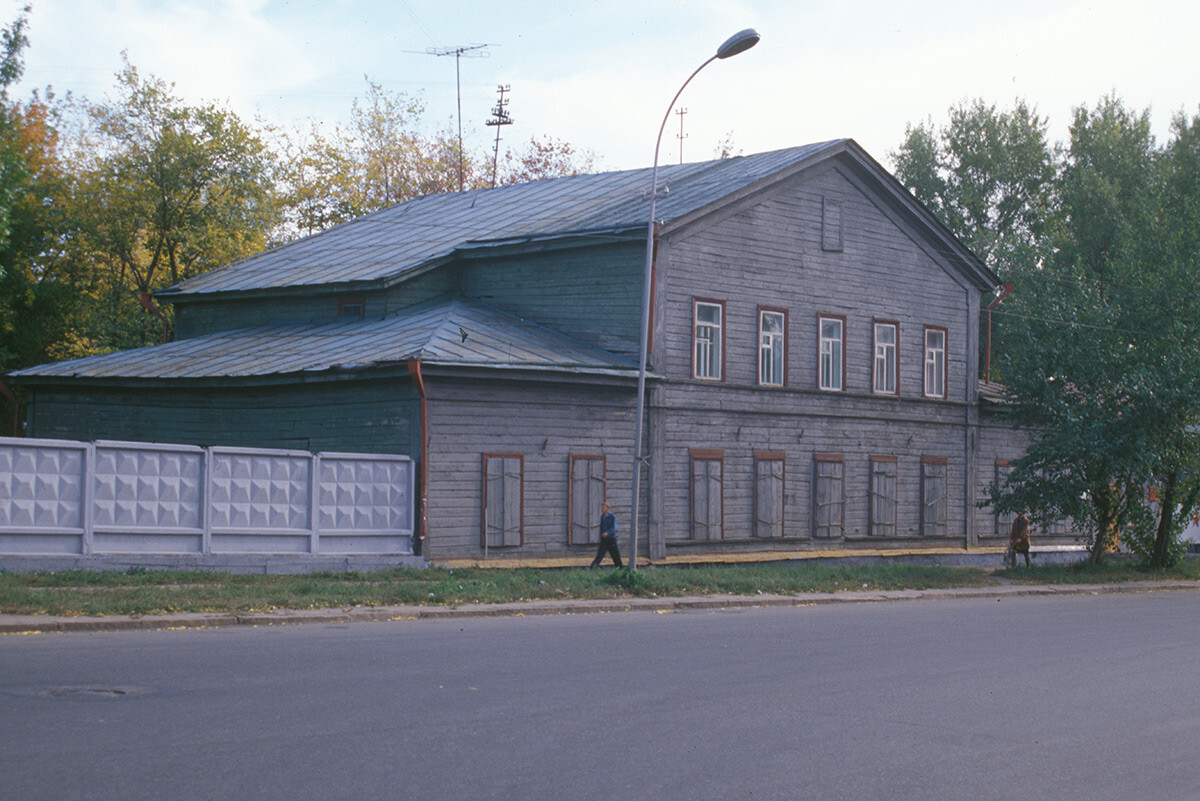
Wooden army building (barracks, hospital). Photo: September 18, 1999
William BrumfieldIn 1854, the Omsk community of 178 registered Jews chose a rabbi and gathered the funds to erect a beautiful wooden synagogue decorated in a “Moorish” style. Miraculously, the building has survived as a national landmark, despite the difficulties imposed on the community during the Soviet period. Closed in the early 1920s, the building was long used as the House of Sanitary Education.

Omsk Synagogue Known as "Soldiers Synagogue," built in 1855. Side facade with "Moorish" window detailing. Photo: September 18, 1999
William BrumfieldAnother synagogue, built in 1873, served the Jewish community for some decades, but it was destroyed by fire and razed in the 1970s. This left the community without a formal place of worship until 1991, when the Soldiers Synagogue was returned as a house of worship to the Or Hadash (“New Light”) community.
Damaged by fire in 1995, the synagogue was carefully restored, with plank siding, with “Moorish” crowns for the upper windows and an ornamental cornice. Another example of a log house of worship is the Hodja Akhmed Mosque (Marshal Zhukov Street 97), originally the house of D.V. Proskuriakov.
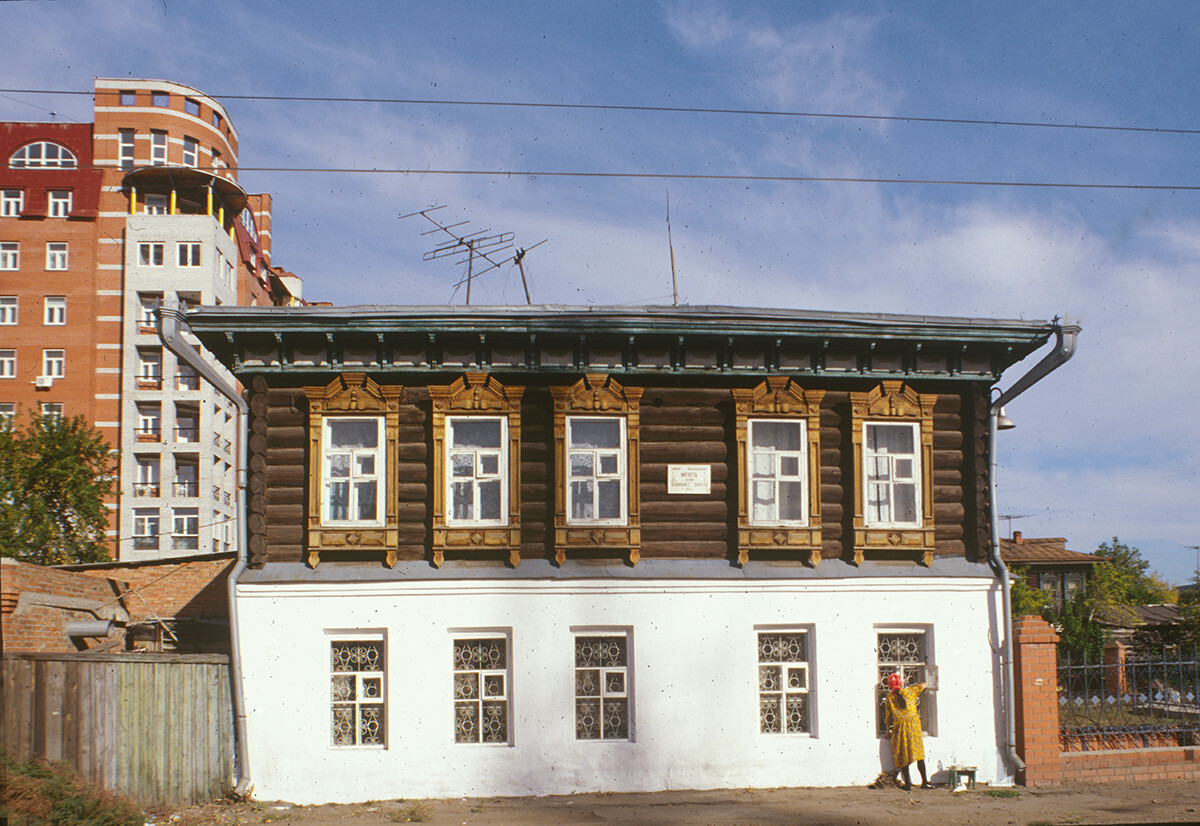
Hodja Akhmed Mosque (Marshal Zhukov Street 97). Photo: September 18, 1999
William BrumfieldAs in other Siberian cities, wooden architecture provided a special charm to the historic center of Omsk, but in recent decades the number of these structures has steadily decreased under the pressures of urban development and inadequate maintenance. Photographs can at least remind one of this page in Russian urban history.
In the early 20th century, Russian photographer Sergey Prokudin-Gorsky developed a complex process for color photography. Between 1903 and 1916, he traveled through the Russian Empire and took over 2,000 photographs with the process, which involved three exposures on a glass plate. In August 1918, he left Russia and ultimately resettled in France where he was reunited with a large part of his collection of glass negatives, as well as 13 albums of contact prints. After his death in Paris in 1944, his heirs sold the collection to the Library of Congress. In the early 21st century, the Library digitized the Prokudin-Gorsky Collection and made it freely available to the global public. A few Russian websites now have versions of the collection. In 1986, architectural historian and photographer William Brumfield organized the first exhibit of Prokudin-Gorsky photographs at the Library of Congress. Over a period of work in Russia beginning in 1970, Brumfield has photographed most of the sites visited by Prokudin-Gorsky. This series of articles juxtaposes Prokudin-Gorsky’s views of architectural monuments with photographs taken by Brumfield decades later.
If using any of Russia Beyond's content, partly or in full, always provide an active hyperlink to the original material.
Subscribe
to our newsletter!
Get the week's best stories straight to your inbox